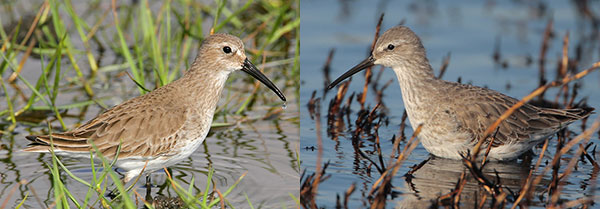
Dunlins and Stilt Sandpipers might not normally be confused but in winter plumage, and while standing in relatively deep water, they can be difficult separate. The following images demonstrate the similarities and differences.
All images © Greg Lavaty.
Dunlin
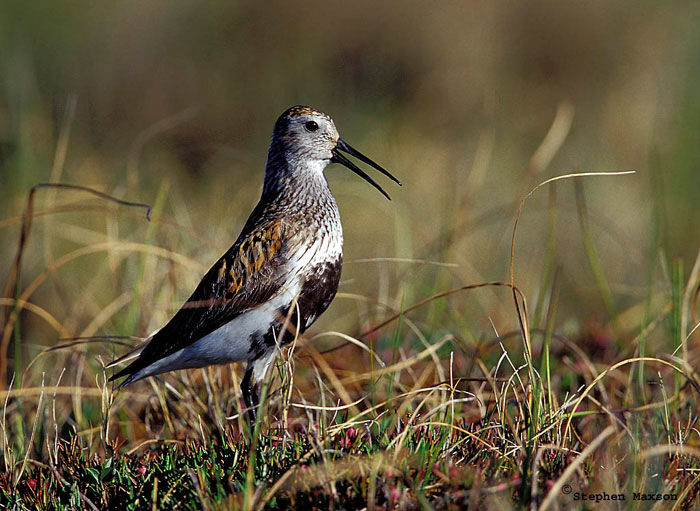
Dunlins are beautiful birds with orange and black on their back and upper wings. They also have a large black patch on their white belly, some orange on their crown, and fine dark markings on their face, neck, and breast.
Females look like males but are not as brightly colored. They also have darker marks on their face, neck, and underparts, and some pale brown on their face and neck. Young birds look like females but don’t have any bright orange in their plumage.
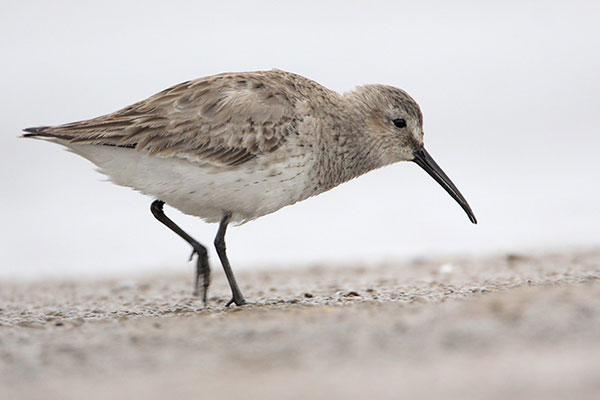
Dunlin in Winter Plumage
During the non-breeding season, we see Dunlins in their winter plumage, which is much grayer. They have white bellies and some darker markings on their chests.
Dunlins have a wide range. In North America, they breed near shorelines in Alaska and North Canada. For winter, most of them move further south, but some stay in southern parts of Alaska. During the non-breeding season, Dunlins can be found on the West and East Coast.
These birds are common in Eurasia too, where they breed in tundra – northern parts of Europe and northern Russia.
Stilt Sandpiper
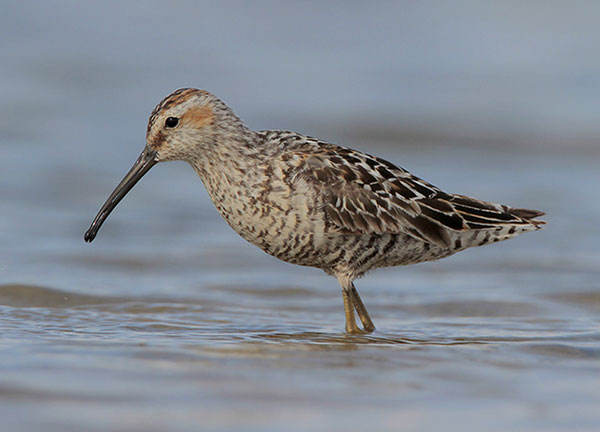
Stilt Sandpiper in breeding plumage
Stilt Sandpipers are medium shorebirds with yellowishor brownish legs and long, somewhat down-curved bills. During breeding season, adults have heavily barred undersides, and dark upperparts marked with white.
This changes for winter months though. Stilt Sandpipers molt into grayer colors for winter, with some light brown on their wings. Their legs are usually bright yellow during this time.
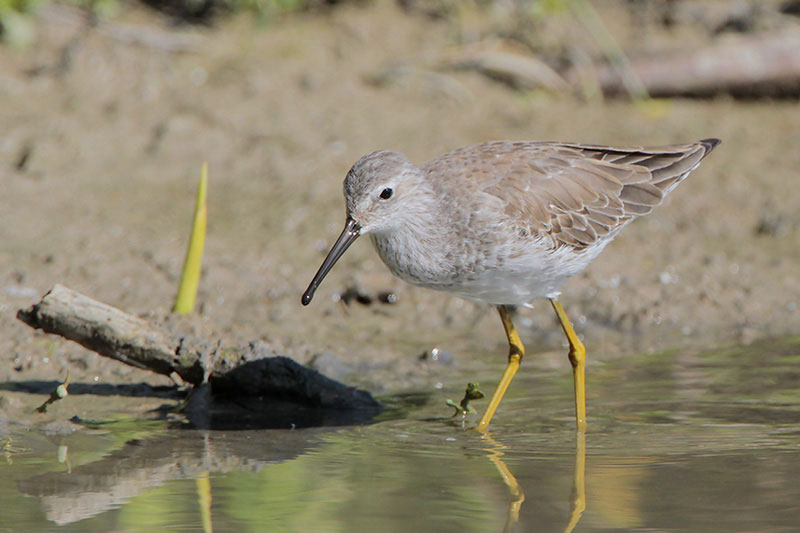
Stilt Sandpiper in Winter Plumage. Note the yellow legs.
Females look similar to males, even during breeding season, so it’s difficult to tell males and females apart. Young birds look similar to non-breeding adults.
Their legs are quite long for their body, but this is the norm for shoreline birds. Along with their long bills, Stilt Sandpipers use their bills to feel the mud for their prey. They often eat invertebrates, and occasionally some plant matter.
Stilt Sandpipers are found in marshy areas. They prefer to nest on moist areas, usually meadows. In North America, Stilt Sandpipers are commonly seen during migration, but some of them winter in southern Florida and Texas. They breed in North Canada and some parts of Alaska.
Comparing the two
Dunlins and Stilt Sandpipers are both shorebirds, yet they are not as identical as it might seem.
Dunlins are generally smaller in size. When it’s not breeding season, both birds are light gray in color, but they look vastly different in summer.
Stilt Sandpipers have barred plumage, while Dunlins have more uniform darker plumage, with darker wings and a darker patch on their bellies. Additionally, Stilt Sandpipers have longer legs.
When it comes to their bills, both have slightly down-curved bills, but Dunlins have a bit smaller beaks. Both use their bills to probe the mud for food and may feed in flocks, especially during migration.
Dunlins are found in a variety of habitats, including coastal mudflats, estuaries, and tundra. They have a wide distribution, breeding in the Arctic tundra and wintering in coastal areas worldwide.
Stilt Sandpipers prefer freshwater habitats such as shallow ponds, marshes, and mudflats. They breed in the Arctic and subarctic regions of North America and Eurasia and migrate to South America for the winter.
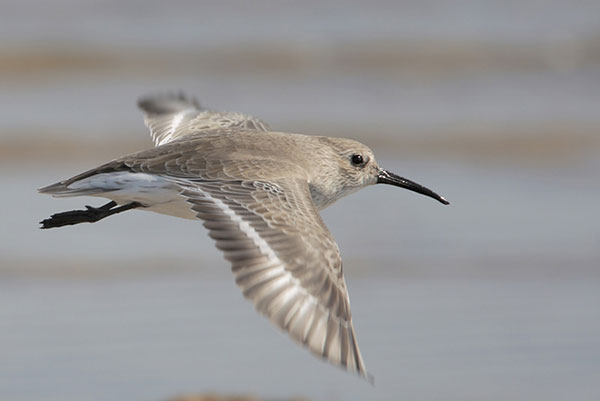
Dunlin in Winter Plumage
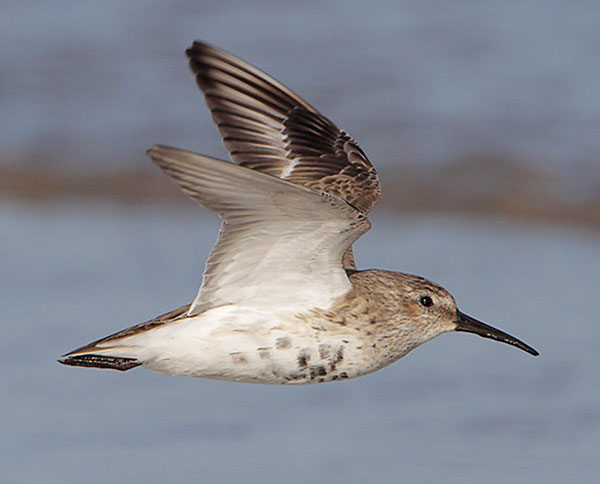
Dunlin in Winter Plumage
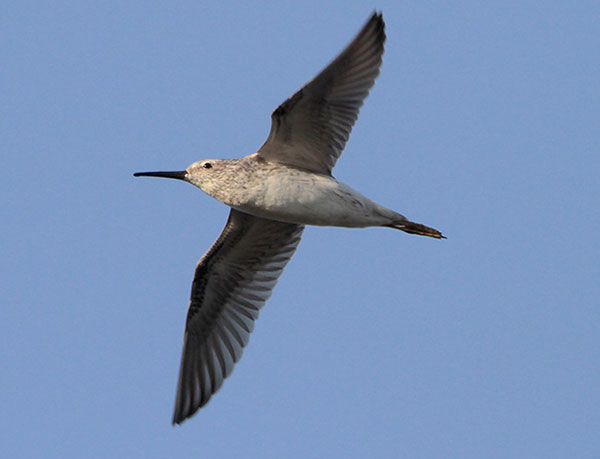
Stilt Sandpipers have long, narrow wings.
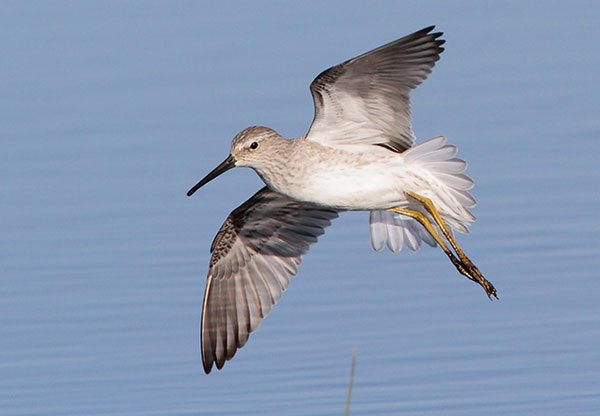
Stilt Sandpiper landing.
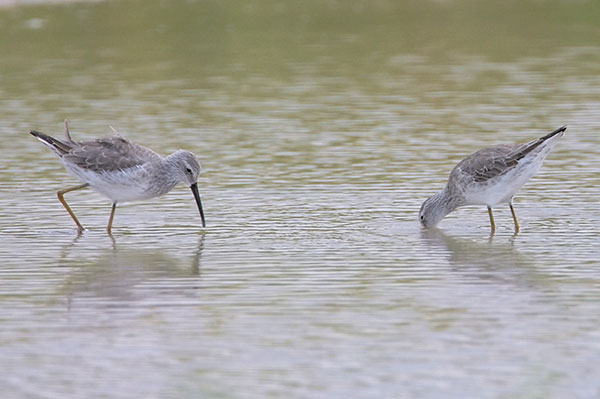
Stilt Sandpiper in non-breeding Plumage.
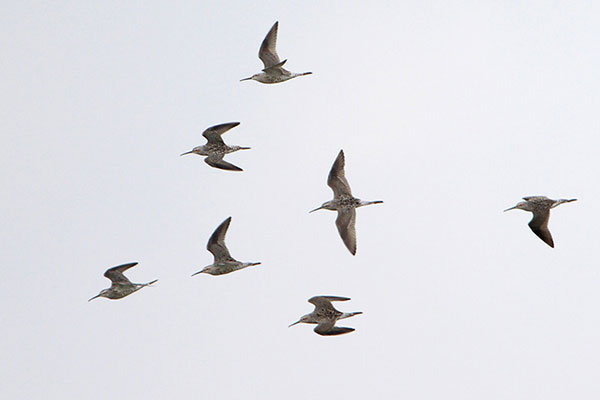
Stilt Sandpipers in flight.
Other Species
Inexperienced birds sometimes confuse Stilt Sandpipers with yellowlegs or Solitary Sandpipers, even though the bill shape is quite different.
Both Lesser and Greater Yellowlegs have similar barred plumage, plus they have long yellow legs, but they breed in boreal forest regions, in marshes and bogs. They do winter in southern shoreline areas in the U.S.
Solitary Sandpipers, however, have more brown barring on their backs, while their undersides are lighter. They have long legs too, but compared to other species, they are more solitary (as their name hints).

